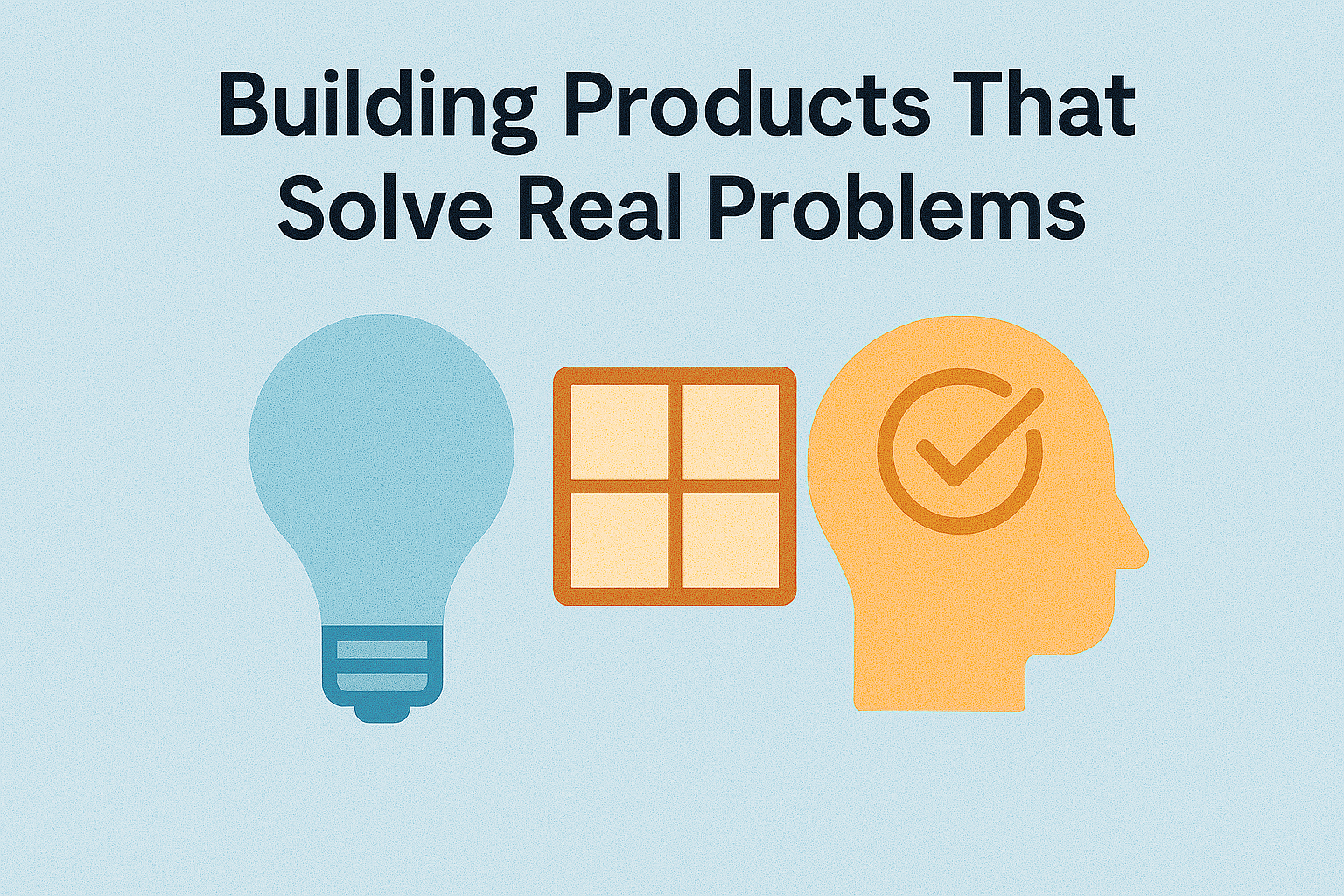Building Products That Solve Real Problems: The Role of Engineers

In the noise of product backlogs, sprints, and ever-growing roadmaps, it’s easy to forget why we build software in the first place: to solve real problems for real people. Yet too often, engineering becomes divorced from that purpose - treated as a delivery function, a team that “builds what they’re told,” rather than a core partner in shaping meaningful solutions.
That needs to change. In modern digital organisations, engineers are not just coders - they are problem solvers, innovators, and user advocates. When engineering teams are empowered to understand the problem space, not just the solution space, we build better products. We move faster. And we create real impact.
From Output to Outcomes
Engineering has historically been measured by output: lines of code written, features delivered, velocity achieved. But shipping faster means little if we’re not solving the right problems. High-performing organisations make a strategic shift from output to outcomes - and that means involving engineers much earlier in the product lifecycle.
Engineers bring a unique and valuable perspective to product discovery. They’re closest to the systems, understand the constraints and capabilities of technology, and often hold the keys to feasibility, scalability, and innovation. When they're invited into conversations about customer pain points and business goals, they don’t just build faster - they help shape smarter solutions.
Problem Solving is a Team Sport
Solving complex, real-world problems isn’t the domain of product managers alone. It’s a collaborative effort that thrives on diverse thinking - customer insights, design intuition, data literacy, and technical imagination. That’s where engineers play a critical role.
The best solutions come from teams where engineers understand not just how to build, but why it matters. This means making the problem visible - through customer interviews, usage analytics, frontline feedback, or even sitting in on service calls. The more engineers understand the human context, the more thoughtful and efficient their technical decisions become.
When engineers co-own the problem, they’re more likely to challenge poor assumptions, propose elegant workarounds, or highlight unintended consequences early. It de-risks delivery, increases alignment, and builds a culture of shared responsibility.
Engineers as Innovators
Real innovation often emerges from the engineering floor. It’s engineers who spot reusable components, propose low-lift experiments, or challenge whether a feature even needs to exist. But this only happens when we create the space for engineers to ask bigger questions:
What’s the real job to be done here?
Are we solving a symptom or the root cause?
Can we validate this idea with less effort?
Is there a smarter, simpler way?
These questions aren’t just technical - they’re strategic. And when engineers feel safe and supported in asking them, we unlock a deeper level of value creation.
Shifting the Role of Engineering Leaders
If we want engineers to help build products that matter, engineering leaders must model and reinforce the behaviours that enable it.
First, we need to challenge the delivery-only mindset. That means rethinking the structures and rituals that separate engineering from discovery. Instead of saying “we’ll involve engineers when the spec is ready,” we should ask, “how can engineers help us explore this idea sooner?”
Second, we need to build fluency in customer problems across our teams. Not just personas and stories, but real empathy. Bring engineers closer to users, align teams around problem statements, and encourage engineers to bring curiosity, not just code.
And finally, we must create space for reflection. If our teams are shipping at speed but learning nothing along the way, we’re not solving real problems - we’re just moving work around. Encourage post-release learning, instrumentation, and experimentation. Make continuous discovery part of the engineering DNA.
Practical Actions to Elevate Engineers as Problem Solvers
Include engineers in discovery: Invite them to customer interviews, ideation sessions, and data reviews. The earlier, the better.
Frame work around problems, not just features: Use problem statements and outcomes in backlogs, not just user stories and tasks.
Encourage experiments: Build time into your delivery cadence for prototypes, spikes, and low-fidelity testing.
Celebrate impact, not just delivery: Measure and recognise contributions to problem solving, customer outcomes, and business value - not just code commits.
Build product empathy: Create cross-functional learning opportunities where engineers can engage directly with users and stakeholders.
Engineers as Catalysts for Real Change
The organisations that thrive in the next decade will be the ones that move beyond building things and focus on building solutions. That requires every function - especially engineering - to lean in, get curious, and take ownership of the problem space.
As heads of digital engineering, our mission is not just to lead great builders - it’s to cultivate great problem solvers. To remind our teams that their work has purpose. And to ensure that purpose is visible, shared, and continuously pursued.
Because when engineers understand the problem, they don’t just write better code - they help build a better world.
Engineering leader blending strategy, culture, and craft to build high-performing teams and future-ready platforms. I drive transformation through autonomy, continuous improvement, and data-driven excellence - creating environments where people thrive, innovation flourishes, and outcomes matter. Passionate about empowering others and reshaping engineering for impact at scale. Let’s build better, together.
